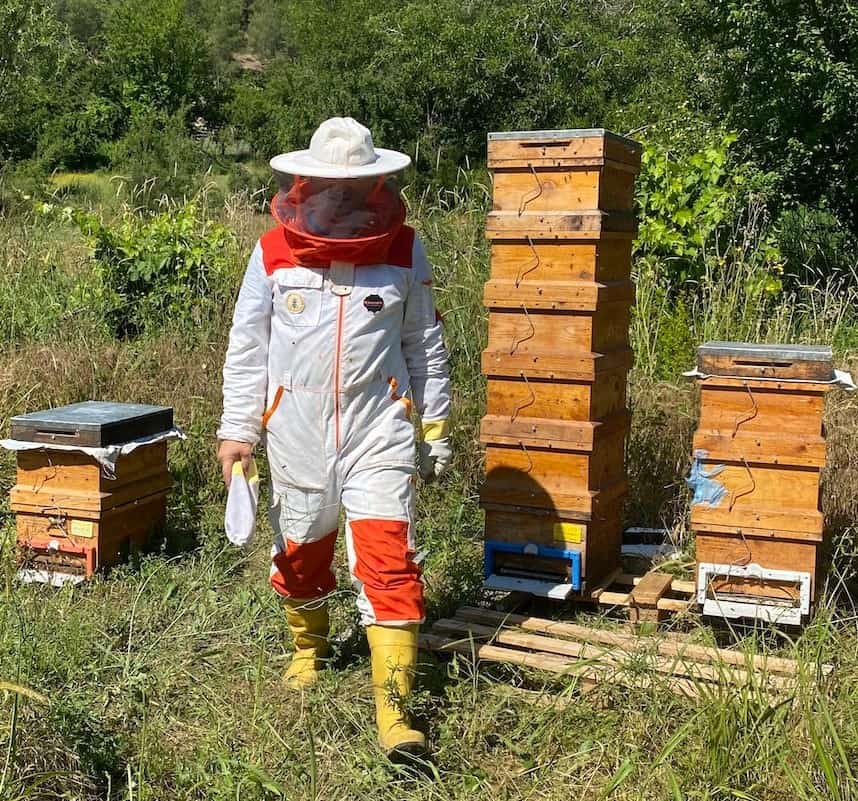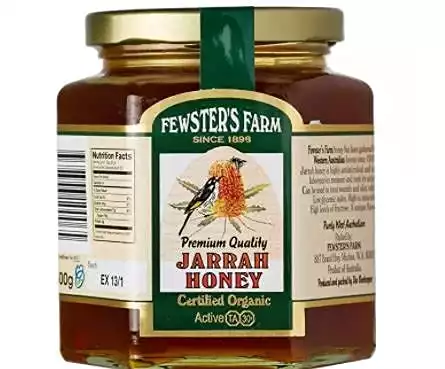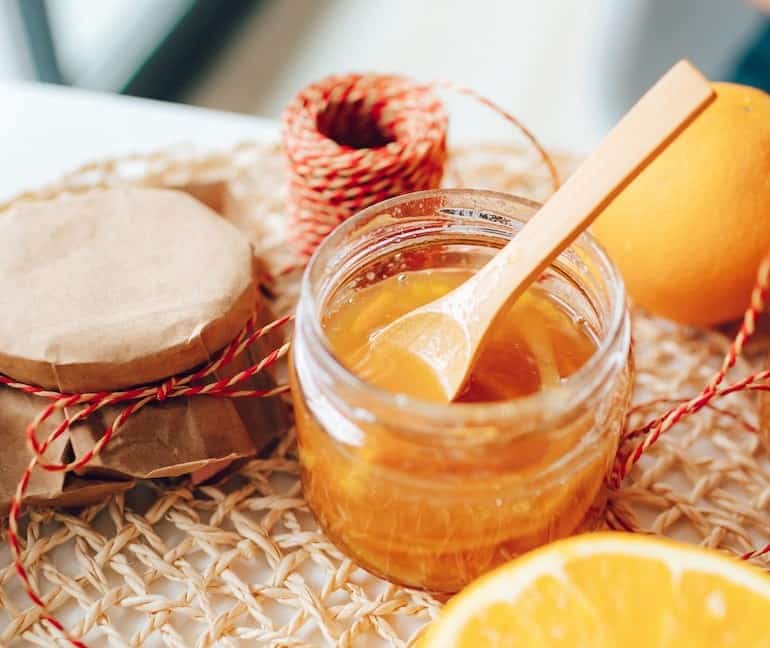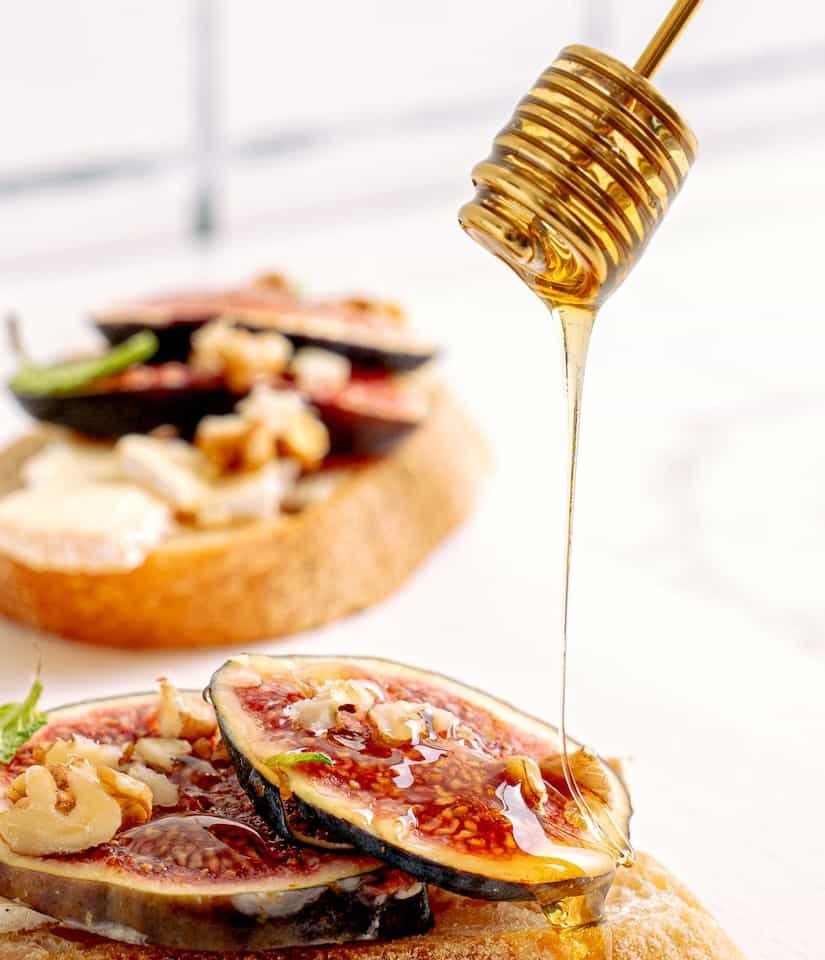For the longest time, Manuka Honey has held on to the Super Honey title. All over the world, it dominates the leaderboard of these healing golden liquids. However, a competent challenger is shaking up the honey scene. It would seem that the tables have turned out for Jarrah Honey.
This blog post takes you to everything you need to know about Jarrah Honey, also known as Australia’s healing honey.
The Jarrah Tree

The Jarrah tree (Eucalyptus marginata) belongs to the genus Eucalyptus and Myrtaceae or myrtle family. It is a unique native plant of Western Australia.
A special, slow-growing type of eucalyptus, this eucalyptus tree flourishes in soils derived from ironstone. It only thrives in the rich, environmentally pristine forests stretching from Perth to Western Australia’s South West.
The wood of the Jarrah tree is durable and sturdy. Hence, it helps in the furniture-making industry.
Its richly-grained termite-and-water-resistant trunks are structural material choices for bridges, wharves, railway sleepers, shipbuilding, and telegraph poles.
Production of Jarrah Honey
Jarrah trees produce lovely, white flowers that transform the forest canopy and create a sanctuary for bees. In spring and early summer, these trees produce a profusion of flowers. These flowers come alive with bees buzzing while gathering pollen and rich nectar to make Jarrah honey.
A Western Australian product, Jarrah is a monofloral variety recognized as 100% pure. Hence, it is relatively free of chemical and antibiotic residues. Naturally made from Jarrah nectar with low moisture content, it has minimal microbial counts.
Beekeepers set up their apiaries within the Jarrah forest in Australia, where a vast majority of the trees are found. The Australian government has long been protecting Jarrah forests from harmful urbanization. Western Australia vigorously enforces strict quarantine controls for apiary products from overseas or interstate.

Qualities of Jarrah Honey
Jarrah is a clear, medium to semi-dark amber in color that is quite viscous but still runny. It is darker and syrup-like compared to other honeys you may have tried.
Because of its high fructose and low glucose levels, pure Jarrah honey remains liquid for a very long time. It is less likely or slow to crystallize. This concentration also means that it tastes sweeter without a medicinal aftertaste.
Easy to consume, this honey is smooth on the palate and delicious in all cuisines. Medium in strength, its rich, nutty malt flavor is unbeatable. Wonderfully delicate and slightly savory, it tastes like caramel brown sugar, with some dried longan fruit aftertaste.
How do you use Jarrah Honey?
Jarrah honey

Enjoy it directly from the jar by consuming one spoonful in the morning. It is great with coffee or as a honey-lemon drink for your daily boost of antioxidants. Or, drizzle it in your favorite cheesecake recipe.
Some people also use this honey not merely as an addition to any menu. Plant growers use it as a root growth enhancer. Simply coat the bottom end of a stem cutting with this honey before planting. Before you know it, you’ll have a successful plant propagation.
Jarrah Honey Health Benefits
Tagged as Australia’s “healing honey,” Jarrah honey is one of the most effective natural antibiotics.
It allows little moisture, leaving no room for microorganisms to survive. The natural enzymes in this honey provide antimicrobial properties. Along with its high hydrogen peroxide level, it can stop the growth of bacteria like staphylococci and E. coli.
Raw Jarrah honey also has antifungal activities that inhibit dermatophyte fungi and Candida fungi. These fungi are potent in causing wound infections as well as oral and vaginal thrush.
This honey is good for stomach health, thanks to its elevated content of Butyric acid. This acid, along with its high amounts of prebiotics and probiotics, lowers the risk of colon cancer.
It also alleviates heartburn and fights bacteria responsible for causing mouth ulcers and bad breath. It eases the symptoms of colds and other infections that may affect the mouth and throat.
Jarrah honey has high antioxidant levels. These antioxidants help boost the immune system and protect against diseases caused by harmful free radicals.
People have been using unpasteurized Jarrah honey for treating wounds, scars, and other skin infections due to its high antimicrobial properties. Speeding up the healing process considerably, it relieves burns, sunburn, and bee sting while protecting the skin.
Additionally, it contains natural sugars, low in glucose but high in fructose levels. All these contribute to a low glycaemic index, reducing insulin response. This means that sugar absorption is slow and does not create a spike in blood sugar. Hence, it is a perfect alternative as an organic sweetener for diabetics.

What is TA or Total Activity rating?
Honeys such as Jarrah, Red Gum, or Manuka are all known as active healing honeys. Their antimicrobial quality is measured for its bacteria-killing scale (phenol) plus other antibacterial factors of honey.
Based on these, they are given a Total Activity rating or TA number (10+, 20+, 30+, etc.). The higher the TA number, the more potent the antimicrobial activity of the honey.
Research shows that Jarrah honey’s level of antibacterial activity is even higher than that of Manuka. This antimicrobial prowess further cements its status as a Super Honey.
The Rarity of Jarrah Honey
More people around the world seek this honey due to several interconnected factors. However, even people in Australia find it hard to come across this honey varietal.
There are several reasons attributing to the scarcity of this variety. The most common of these is the endemicity of the Jarrah tree thriving in the forest of Western Australia. For this reason, other countries do not produce this honey variety.
In addition, beekeepers find it increasingly difficult to harvest Jarrah honey. The way and frequency at which these trees flower affects the volume of the available honey.
The Jarrah tree has a short flowering season, once every two to three years. And it happens only if temperatures exceed 25˚C and there is adequate rainfall. Due to these conditions, Jarrah honey is, unfortunately, quite rare.

Jarrah Honey vs Manuka Honey
Is Jarrah Honey as good as Manuka?
Like Manuka honey, Jarrah has strong antibacterial properties. However, Jarrah is 2 to 3 times higher in antioxidants and has 90% greater anti-microbial activity than the former.
Due to its hydrogen peroxide-dependent activity, it is effective at inhibiting dermatophyte fungi and species of the yeast Candida. Jarrah honey is distinct from other types of honey because of antibacterial phytochemicals like methylglyoxal components.
Compared to Manuka honey, Jarrah is more scarce and costly because of its rareness and the high demand for it.
Notably, another primary distinction between Manuka and Jarrah honey is their taste. Unlike Manuka, Jarrah honey has a more earthy sweetness. It has a tinge of bitterness because of the natural active compounds of methylglyoxal and hydrogen peroxide. In short, Jarrah honey is simply sweeter and healthier.
Demand for raw Jarrah honey is increasing. Soon, it might overtake the position of Manuka honey.
But at the moment, New Zealand is to Manuka Honey as Australia is to Jarrah Honey!
